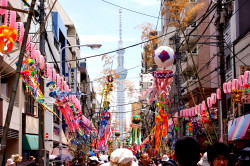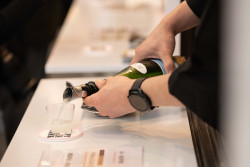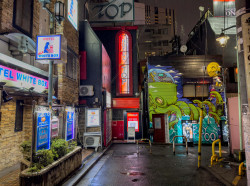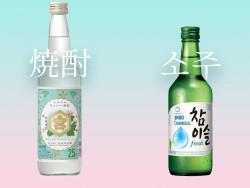
September 22, 2011
Ivanramen Plus
NY chef uses his noodle inventively with a Japanese favorite
By Metropolis
Originally published on metropolis.co.jp on September 2011


You know you’re onto a winner when American chef-extraordinaire Rick Bayless takes time during a whirlwind trip to Tokyo to visit your restaurant, learn your craft and tweet positively about it: “Took lesson in ramen-making from Ivan Orkin at his new shop. What a terrific, generous guy!”
Celebrity chefs aside, customers of all persuasions are important to Orkin. Culinary Institute of America-trained and with a pedigree-chef background, this transplanted New Yorker has garnered a fair share of attention for being the first non-Japanese to open an (eponymously named) ramen shop here in the Big Mikan.
And now he has opened another: Ivanramen Plus.
Situated off a shopping street in suburban Kyodo, the restaurant’s design is clean and functional. Bright and modern, the fit-out features a long wooden counter with surprisingly comfortable plastic chairs.
The “plus” does not denote “better” or abundance. Although half-joking that he should have called the new joint “Ivan’s Noodles,” Orkin sees this restaurant as a vehicle for more experimental culinary creations.
Case in point: the cheese mazemen (pictured; from ¥780). Continuing the cross-cultural noodle exchange allegedly instigated by Marco Polo all those years ago, Orkin brings Mediterranean flair to a Japanese staple, pointedly marrying al dente noodles and quattro formaggi—mozzarella, Hokkaido white cheese, edam and parmesan—in a creamy white broth. When glistening chashu and an optional onsen-tamago (slow-poached egg) are added, it makes for a deconstructed carbonara, albeit one with a decidedly dashi twist.
Dashi soup without meat stock is the point of difference at the new kitchen. While shio (salt) and soy-based ramen is on the menu, the ago-dashi ramen (from ¥780) brims with DHA. Made out of ago (dried flying fish) with dried scallop and dried shrimp, among other ingredients, the ramen is full of depth but imparts a light, clean flavor. For purists concerned about a broth made without pork or chicken, don’t worry—the ago-dashi punches well above its weight.
Another departure is the noodles. Orkin’s noodles are made in-house and decidedly different from those found at your run-of-the-mill ramen joint.
“In the ramen world, it used to be that making your own noodles was unheard of,” says Orkin. “I never understood this—ramen chefs would go to all this trouble perfecting their soup, but then buy noodles from a noodle factory. What a let-down!”
At Ivanramen Plus, most of the noodles are of the hira-uchi (wide, flat) variety. The noodles in the vegetable soymilk tsukemen (noodles served separately from a bowl of dipping soup; from ¥780) are made from stone-ground wheat. Populated with potatoes, carrots and garlic, the soymilk broth is heady, redolent comfort food.

But it’s the noodles in a colorful, seasonal dish, Orkin’s roasted summer vegetable hayashi-chuka (chilled ramen noodles; from ¥980), that are the day’s winner. Flecked with wholewheat that has been toasted before being ground, these noodles are a toothsome foil to the slippery mound of okra, tomato, eggplant and other vegetables perched on top.
Describing his flavorful food as “slow food, fast,” it’s a mantra that really seems to work. With everything made from scratch, crafted from high-quality ingredients and bearing no MSG, it’s no wonder people from all walks of life are celebrating that ramen no longer need be a guilty pleasure.







